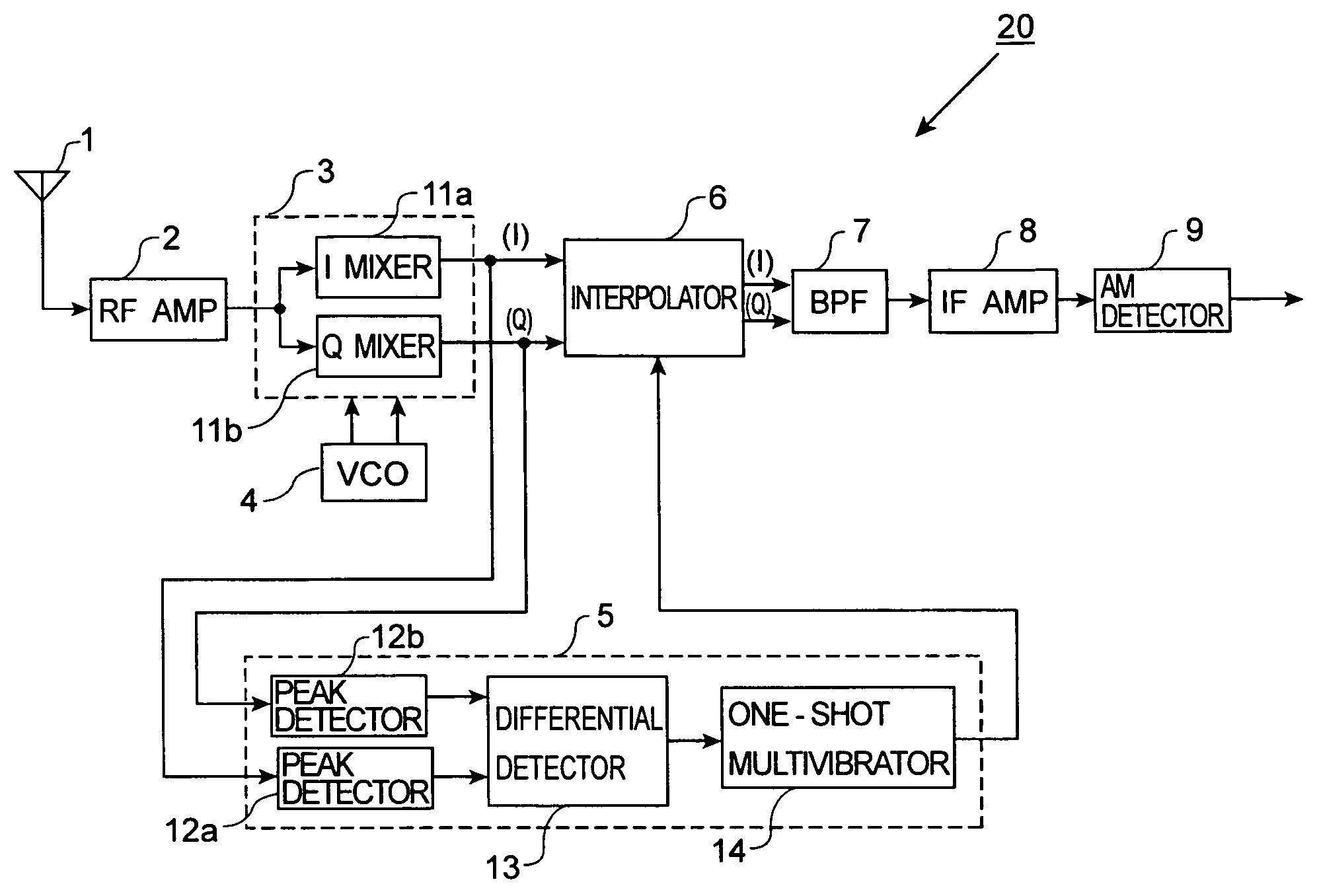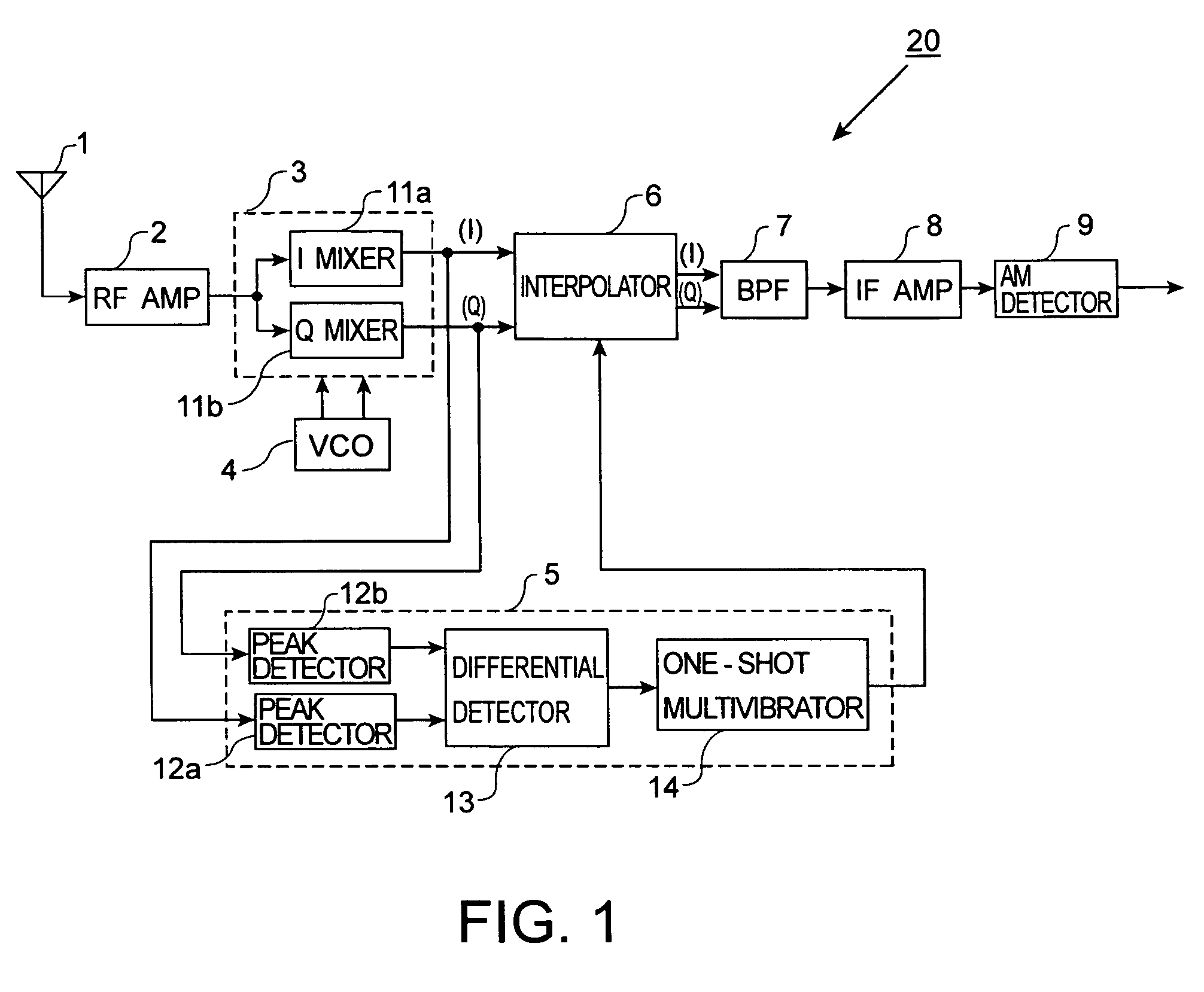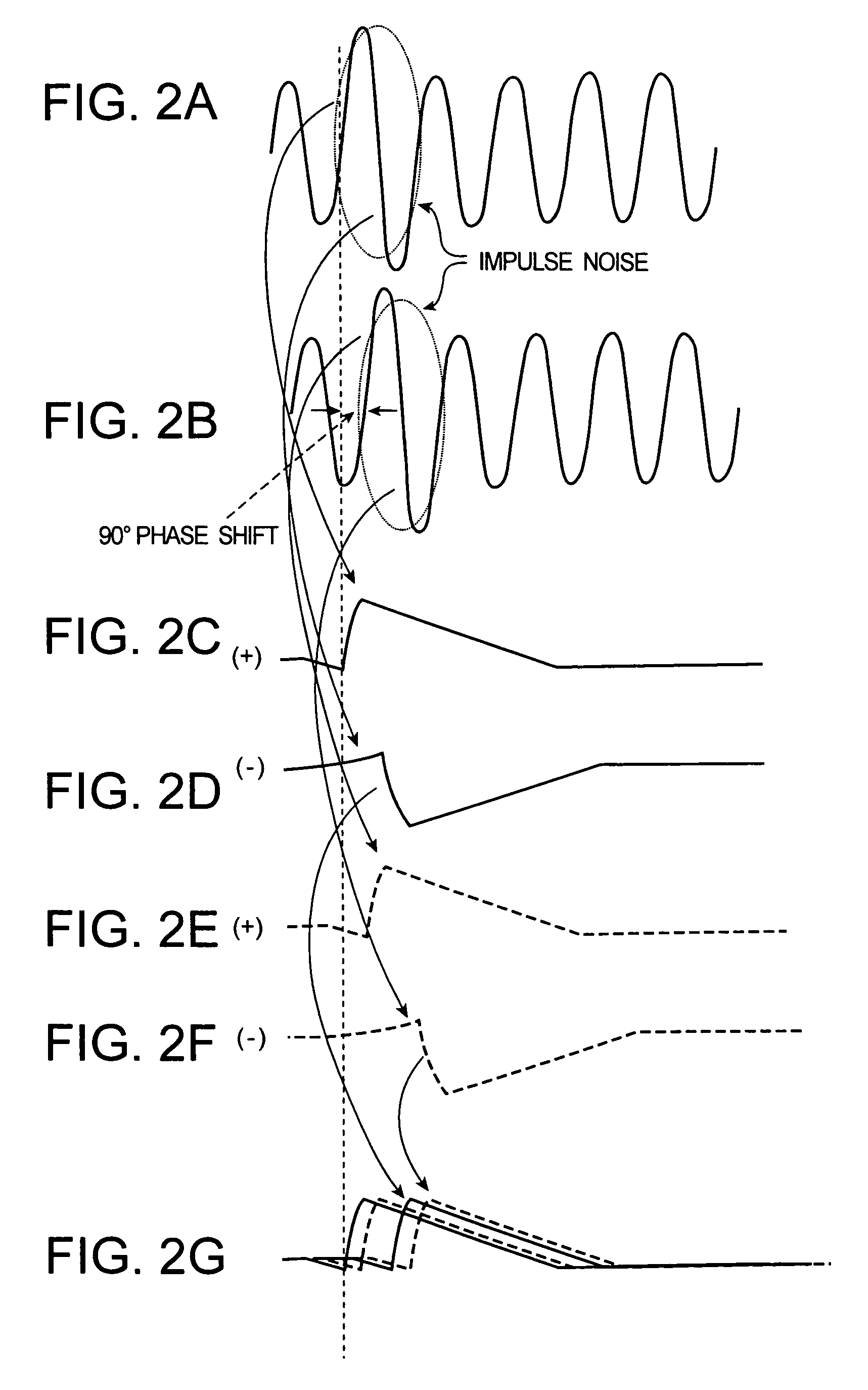Receiver
a receiver and receiver technology, applied in the field of receivers, can solve the problem that input signals cannot be sufficiently separated from irregular impulse nois
- Summary
- Abstract
- Description
- Claims
- Application Information
AI Technical Summary
Benefits of technology
Problems solved by technology
Method used
Image
Examples
first embodiment
[0020]A receiver of the first embodiment in accordance with the present invention is described with reference to the drawings. FIG. 1 is a block diagram of a single heterodyne type AM receiver. In order to eliminate or reduce impulse noise, an I / Q mixer, an impulse noise detector and an interpolator are provided in the embodiment.
[0021]As shown in FIG. 1, AM receiver 20 is provided with antenna 1, RF amplifier 2, I / Q mixer 3, voltage controlled oscillator (VCO) 4, impulse noise detector 5, interpolator 6, band pass filter (BFF) 7, intermediate frequency (IF) amplifier 8 and AM detector 9. Antenna 1 receives outer electromagnetic waves (AM signals) and supplies the signal to RF amplifier 2 through a filter (not shown). RF amplifier 2 amplifies weak outer signals received through antenna 1.
[0022]VCO 4 functioning as a voltage controlled oscillator outputs a local oscillation signal, the frequency of which is different from a receiving frequency by a predetermined frequency. I / Q mixer ...
second embodiment
[0040]Now referring to FIG. 5, a receiver in accordance with the second embodiment of the present invention will be described. FIG. 5 is a block diagram of a single heterodyne type AM receiver. In this embodiment, an additional interpolator is provided on the output side of an AM detector.
[0041]Components identical or similar to those of the first embodiment use the same reference numerals so that their explanations are omitted and only different components will be described below in detail.
[0042]As shown in FIG. 5, AM receiver 20a is provided with antenna 1, RF amplifier 2, I / Q mixer 3, VCO 4, impulse noise detector 5, interpolators 6a and 6b, BPF 7, IF amplifier 8 and AM detector 9.
[0043]Interpolator 6a is supplied with output signals from I / Q mixer 3, carries out waveform-interpolations of the output signals in response to an interpolation signal output from impulse noise detector 5 and eliminates impulse noises from them. Interpolator 6b is supplied with an output signal detecte...
third embodiment
[0046]Now referring to the attached drawings, a receiver of the third embodiment will be described. FIG. 6 is a block diagram of a double super heterodyne type AM receiver. The receiver of this embodiment includes two I / Q mixers.
[0047]Components identical or similar to those of the first embodiment use the same reference numerals so that their explanations are omitted and only different components will be described below in detail.
[0048]As shown in FIG. 6, AM receiver 20b is provided with antenna 1, RF amplifier 2, I / Q mixers 3a and 3b, VCO 4, impulse noise detector 5, interpolator 6, BPF 7, IF amplifier 8, AM detector 9 and oscillator (OSC) 15. Here, since the structure of I / Q mixers 3a and 3b is in two stages, characteristics of output signals supplied from I / Q mixers 3a and 3b to interpolator 6 are improved, so that loads for latter stages than I / Q mixers 3a and 3b, such as interpolator 6, are reduced. Here, since I / Q mixers 3a and 3b are two stages, a load of a later stage than ...
PUM
 Login to View More
Login to View More Abstract
Description
Claims
Application Information
 Login to View More
Login to View More - R&D
- Intellectual Property
- Life Sciences
- Materials
- Tech Scout
- Unparalleled Data Quality
- Higher Quality Content
- 60% Fewer Hallucinations
Browse by: Latest US Patents, China's latest patents, Technical Efficacy Thesaurus, Application Domain, Technology Topic, Popular Technical Reports.
© 2025 PatSnap. All rights reserved.Legal|Privacy policy|Modern Slavery Act Transparency Statement|Sitemap|About US| Contact US: help@patsnap.com



